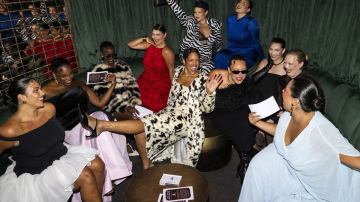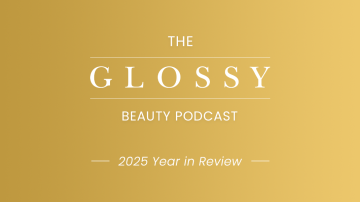This is an episode of the Glossy Beauty Podcast, which features candid conversations about how today’s trends are shaping the future of the beauty and wellness industries. More from the series →
Subscribe: Apple Podcasts • Spotify
Krave Beauty isn’t your average K-Beauty brand.
“[Our mission] resonates with a lot of people who are really tired of the beauty industry’s narrative of ‘more is more,’” CEO and co-founder Liah Yoo told Glossy.
After getting her start working for Amorepacific in Seoul, South Korea, Yoo joined YouTube to share her own skin challenges. “I was documenting my acne skin struggles in my mid 20s, and I literally tried everything,” she said. “Nothing worked until I pressed reset and simplified my routine, going from a 14-step skin-care routine to a super minimal three-step skin-care routine [with] super gentle, minimal, hydrating ingredients.”
Yoo currently has 1.2 million YouTube subscribers who now follow her journey as a founder.
Yoo launched Krave Beauty in 2017 and currently sells DTC and through Amazon. She splits her time between Seoul and New York City with most products formulated and manufactured in South Korea. Krave launches around one product per year and the entire line is based on strengthening the skin’s barrier.
“The ‘less is more’ [approach to skin care] has kind of transcended into something bigger,” Yoo told Glossy. “[We ask ourselves,] ‘How does [this mission] impact the wider stakeholders, the environment and the planet?’ Because the more products we start churning out, the more impact there’s going to be environmentally and also socially, too.”
That is, how can a brand have success without launching several new products per year or encouraging consumers to use a vanity’s worth of products each day?
Over the past few years, Yoo has been increasingly interested in building the most ethical supply chain she can. That is, a supply chain where every person is treated and paid fairly, which requires a level of transparency and accountability few beauty brands attempt.
In today’s episode, Yoo walks us through the process of sourcing tamanu oil, a main ingredient in Krave’s best-selling $28 Great Barrier Relief Serum.
But first, Lexy Lebsack is joined by senior reporter Emily Jensen to discuss the news of the week. This includes Rare Beauty’s foray into fragrance with Rare Eau de Parfum, a $75 fragrance created with famous nose Jerome Epinette. It launches at Sephora on August 7. Lebsack and Jensen also discuss a lineup of new C-suite appointments, including new execs at Herbivore and Saltair. Finally, they discuss L’Oréal’s latest earnings and a shift happening within the in-office injectable marketplace.
On Krave Beauty’s ‘aha moment’ around sourcing
Yoo: “Quite frankly, a lot of the beauty industry insiders would know that not a lot of brands would have direct access to the exact farm that they’re sourcing the oils or the extracts from. It’s always the ingredient suppliers, the distributors in between, who act as a middleman, who’s useful to source these ingredients on behalf of you, but almost acts as another layer to get to the true source. So for us, it was the ‘aha moment’ when our tamanu oil that we were sourcing from Madagascar got discontinued without the ingredient supplier giving us any valid, or really compelling, reason as to why it got discontinued. So it was kind of a really big business problem for us because Great Barrier Relief [face serum], which uses 10% tamanu oil, is one of our hero products. We need to keep producing this product, but we don’t have an oil source, so we put that into our own hands and we partnered with a nonprofit organization called Women’s Earth Alliance to find the perfect community to farm and harvest our tamanu oil in the most responsible way possible.”
On telling the sourcing story for her consumers
Yoo: “[We] definitely relied on YouTube. We posted a full vlog that I filmed while I was visiting the community and their region. It was really cool because the women are so excited to show you around, what they’re doing day-to-day. So we actually took a whole stroll of the entire forest where the tamanu trees are planted and you get to see this beautiful biodiversity where the tamanu trees are not like a monoculture, like lands of tamanu trees. It’s actually mixed with ginger, cassava and all sorts of different trees and crops in a beautiful ensemble. To witness that in person, you really want to tell the story to your audience as much as possible, because when we’re thinking about farming in the U.S., I feel like the image that you visually have is just fields and fields of fields of corn. To be able to provide this visual reference of what biodiversity actually looks like on the other side of the world, and what notes we can take from it, there’s nothing more effective than social media. So I had made a lot of YouTube videos and instagram videos, TikTok videos, as much as possible just highlighting the work that they were doing and highlighting just the emotional sentiment that they were trying to deliver to me. [I tried to] vividly translate that in my videos.”




